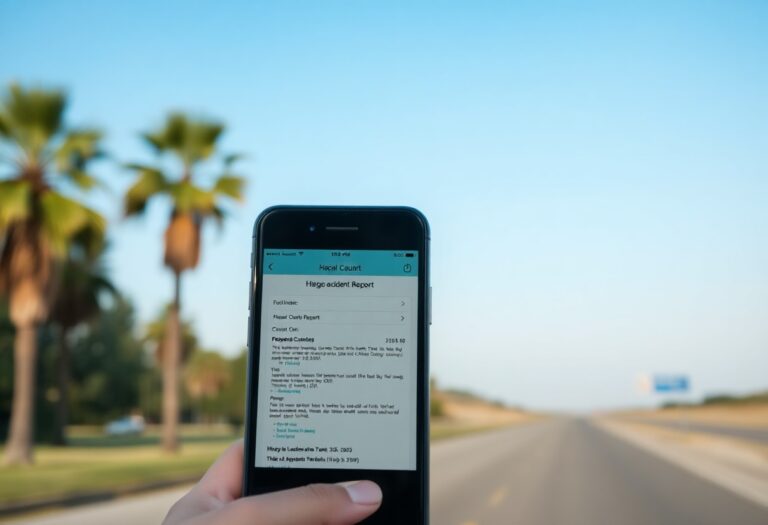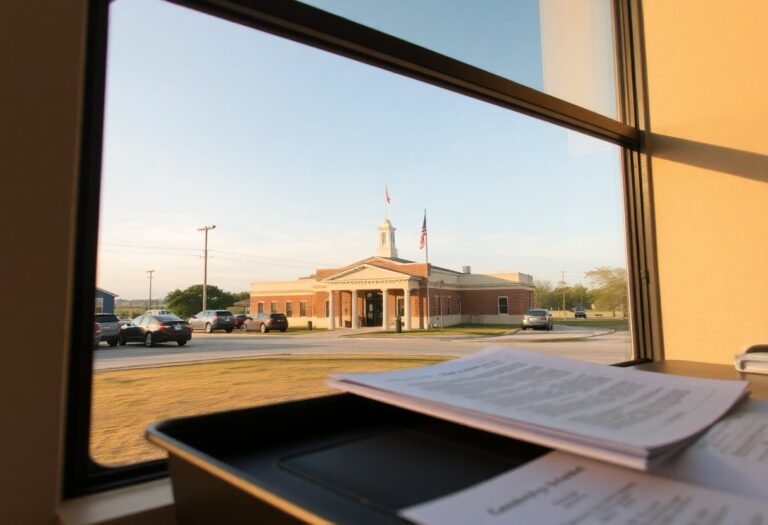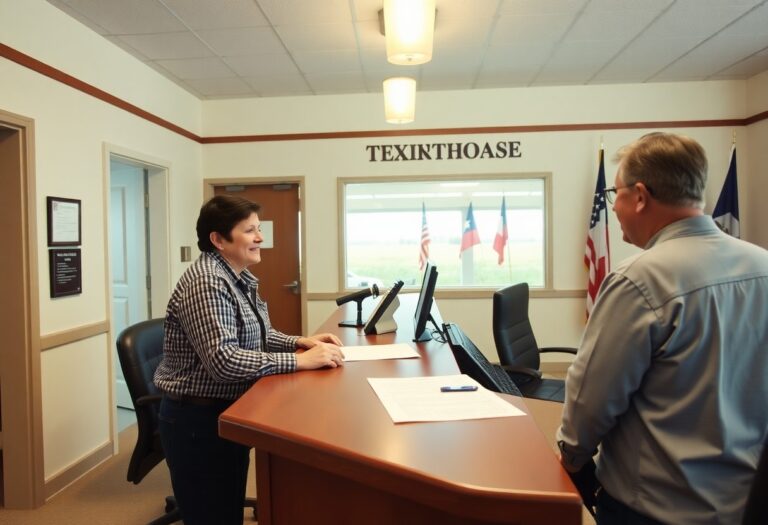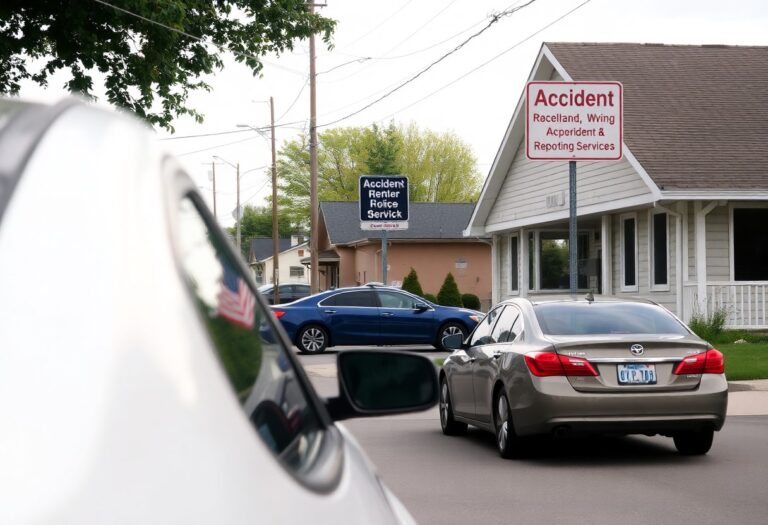Uvalde County provides residents with necessary resources to help you navigate the process of obtaining crash reports. When involved in accidents, having access to accurate and timely information is vital for your safety and insurance needs. This blog post will guide you through the step-by-step process of requesting these reports, empowering you to streamline your experience and avoid unnecessary complications. You’ll find that understanding the local system can make a significant difference in addressing your concerns efficiently.
Unraveling the Norms: The Legal Framework for Crash Reports
The legal framework governing crash reports in Uvalde County, Texas, is primarily guided by state regulations. These laws aim to clarify the process of accessing accident reports and provide transparency concerning the information contained within them. Understanding this framework allows you to navigate the often complex landscape of public records more effectively and ensures you know your rights and obligations when requesting crucial information.
Texas Transportation Code: Key Provisions
The Texas Transportation Code outlines necessary provisions regarding the creation, filing, and accessibility of crash reports. Specifically, Section 550.064 establishes that law enforcement agencies must file an accident report if a collision results in injury or property damage. This section also stipulates the timeline for filing reports and the procedures for making them available to the public.
Who Can Request Accident Reports?
Requests for accident reports can typically be made by any individual involved in the crash, which includes drivers, passengers, and pedestrians. Additionally, concerned parties such as insurance agents or attorneys representing those involved can also request reports, provided that they have authorization from the individuals they represent.
Understanding the criteria for who can request accident reports is vital for those who wish to access this information. According to Texas law, not only can you, as an involved party, request your accident report, but so can your legal representatives and insurance companies. This ensures that parties directly affected by the incident can obtain the necessary information to support claims, legal actions, or personal inquiries. When making a request, it’s often required to provide identifying details, such as the date of the incident and relevant case numbers to facilitate a swift response.
Demystifying the Process: How to Request a Crash Report
Requesting a crash report in Uvalde County can seem overwhelming, but simplifying the steps makes it manageable. Understanding the specific process and knowing what information you need to provide will streamline your request significantly, ensuring you receive your report without unnecessary delays.
Step-by-Step Guide to Initiating Your Request
| Step | Description |
|---|---|
| 1 | Gather necessary information: dates, locations, and involved parties. |
| 2 | Visit the Uvalde County Clerk’s website or office for forms. |
| 3 | Complete the request form with accurate details. |
| 4 | Submit your request either online or in person. |
| 5 | Pay any required fees, if applicable. |
| 6 | Await confirmation and delivery of your crash report. |
Common Pitfalls and How to Avoid Them
While the process seems straightforward, several common pitfalls can lead to delays or complications in obtaining your crash report. Familiarizing yourself with these missteps will empower you to navigate the system more efficiently.
One frequent issue involves incomplete or incorrect details in your request, which can result in the clerk’s office being unable to locate your report. Always double-check names, dates, and addresses before submission. Additionally, failing to anticipate fees associated with your request may cause surprises; ensure you confirm any potential costs upfront. Lastly, misunderstandings about where to submit the request can complicate matters; verify if online submission is accepted or if an in-person visit is necessary to avoid unnecessary trips to the office.
The Role of Local Authorities: Who Holds the Data?
Understanding who holds the data in Uvalde County is important to navigating crash report requests. Local authorities, including the Uvalde Police Department and the County Clerk’s Office, play vital roles in maintaining and providing access to these records. Each entity possesses distinct responsibilities and procedures that you must follow to obtain the necessary information for your case.
Uvalde Police Department: Responsibilities and Access
The Uvalde Police Department is responsible for documenting and investigating traffic accidents within the city limits. They maintain detailed reports that include vital information such as the location, involved parties, and circumstances of the crash. To access these reports, it’s advisable to contact them directly; they typically require specific details about the accident, such as the date and time, to assist you in your request.
County Clerk’s Office: The Gateway to Official Records
Your next stop for crash report access is the Uvalde County Clerk’s Office. This office acts as a crucial link between the public and official records. They store accident reports that might not be available through local law enforcement and serve as a one-stop shop for various types of documentation related to county legal matters.
In Uvalde County, the County Clerk’s Office maintains a comprehensive archive of official documents, including crash reports. Their accessibility to these records may vary based on their policies, but typically you can request a report in person or online. Many residents appreciate the convenience, as the Clerk’s Office strives to process requests efficiently. Familiarizing yourself with their requirements, such as proof of identity and any associated fees, will streamline your experience, ensuring you receive the information you need promptly.
Fees and Wait Times: What to Expect
Your experience when requesting a crash report in Uvalde County will include some associated fees and varying wait times. Understanding these elements can help you prepare for your request and avoid any surprises along the way. Generally, you can expect to pay a nominal fee for obtaining a report, with additional charges for expedited services. The time necessary to receive your report may depend on several factors, including the volume of requests being processed and the specific agency handling your request.
Typical Costs Associated with Report Requests
The fees for crash report requests can vary depending on the agency and the type of report you need. Typically, you might pay around $6 to $10 for a standard report. If you choose to expedite your request, expect to pay additional charges, which could range from $15 to $30. Knowing these costs in advance can help you budget accordingly and ensure you have the proper funds available.
Understanding Processing Times and Factors Affecting Delays
Processing times for crash report requests can range from a few days to several weeks, influenced by several factors. For example, if the incident was complex or involved multiple parties, it could take longer to compile the necessary documentation. Additionally, busy periods, like holiday seasons, might lead to backlogs in processing requests. Investigative delays could also arise from pending legal proceedings that require documentation to remain confidential for a while.
- Typical wait times range from days to weeks.
- Factors such as report complexity and agency workload play a significant role.
- Assume that preparing for a longer wait is advisable during peak times.
Supplementary factors might influence processing times as well. For instance, incomplete or improperly submitted forms can cause additional delays. If you’re requesting a report that is currently involved in a legal matter, the agency may not release it until the case is resolved. You also want to ensure you have all the necessary information, such as report number and the details surrounding the crash, as this can drastically speed up the process.
- Submitting accurate forms can expedite the process significantly.
- Pending legal matters might delay your access to certain reports.
- Assume that proactive communication with the agency can often clarify potential delays.
Making the Most of Your Crash Report: Analysis and Next Steps
Once you have your crash report in hand, the next step is analyzing the data to glean actionable insights. This report can reveal valuable details about the circumstances surrounding the crash, including weather conditions, road conditions, and contributing factors. By identifying patterns or inconsistencies in the report, you can better understand the incident and prepare for further discussions with insurance agents or legal representatives. These insights can be foundational in determining liability and strengthening your position moving forward.
Interpreting the Data: What the Report Tells You
Your crash report provides a wealth of information that goes beyond mere facts. It includes eyewitness accounts, diagrams, and even the responding officer’s observations, all of which help paint a clearer picture of the incident. By breaking down these elements, you can identify key factors contributing to the crash. For instance, a report that notes “poor visibility” may suggest that weather conditions were a significant player, which could influence discussions with your insurer or any legal proceedings.
Utilizing the Information for Legal and Insurance Purposes
The crash report serves as a critical document for both legal and insurance matters. Having a detailed understanding of the report can empower you when negotiating with your insurance company or pursuing any necessary legal actions. This document can substantiate your claims, validate your version of events, and clarify the details pertinent to your situation.
For insurance purposes, your crash report can be the anchor of your claim, showcasing aspects like damages, injuries, and potential liability. Insurance companies often rely heavily on this documentation to assess claims and determine payouts. If the report indicates that another driver was at fault due to unsafe driving practices, it can bolster your case for seeking compensation. Similarly, if you find errors or discrepancies in the report, addressing these with your insurance or legal team can help ensure you’re not unfairly penalized. Having a focused strategy based on your report not only strengthens your stance but also expedites the resolution process.
Final Words
Presently, making crash report requests in Uvalde County, Texas, can be a straightforward process if you know where to look. By following the guidelines and utilizing the available resources, you can obtain necessary information quickly and efficiently. Familiarizing yourself with the procedures will empower you to handle your requests smoothly, ensuring you have access to the documentation you need.













